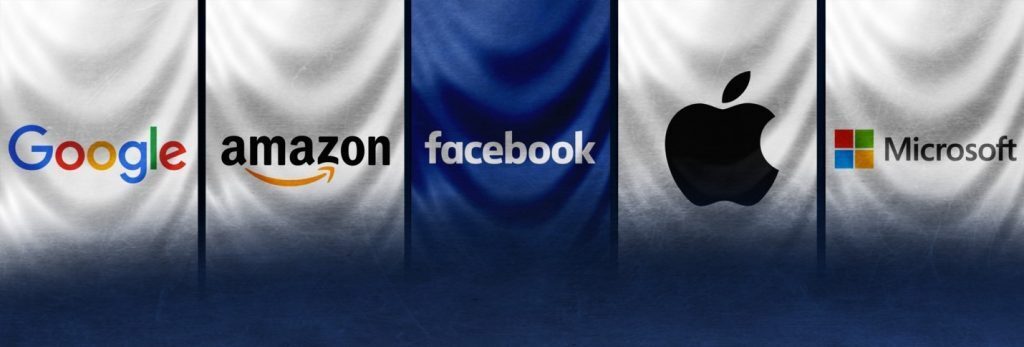Recession in Canada: What is Tech Inflation?

Rest assured, we’re not doomed. But we are experiencing an exorbitant cost of living across the country. As Canadians struggle to fill up their gas tanks and afford groceries, the tech industry is laying off some of its workforces. What does that mean for Canadian tech users and what can we do to protect ourselves from tech inflation?
What is tech inflation?
Inflation is a rise in prices that correlates to the decline of purchasing power over time. The rate at which purchasing power plummets is reflected in the average price increase in a good or service over a set period of time. This rise in prices is expressed as a percentage that refers to a unit of currency buying less than it did before. For example, gas prices in Montreal in 1995 were approximately 56.8¢ per litre. In 2009 it was about 97.7¢. In 2022, you’re looking at around $1.59 per litre.
Tech inflation is basically regular ‘ole inflation but applied to the technology industry.
Tech inflation can be divided into two parts: services and products.
- Services: These are IT services and maintenance workers who specialize in technology.
- Products: This refers to any piece of physical technology used in and out of the home like smartphones, tablets, laptops, desktops, gaming consoles, smart watches, internet of things (IoT) items, etc.
Inflation has impacted the price of tech products but unlike food and other consumables, tech items have a longer production cycle making price rises harder to see. When companies set a product’s price point it’s at the beginning of the development cycle. Plus, the production cycle of a tech product is generally 18 months (the average time it takes an idea to go from conception to store shelves) to immunize it against short-term inflation swings.

What’s interesting is that tech devices are often subject to deflation. Once something is released, it usually becomes less expensive as newer models enter the market. The only exception is obsolete tech that sells for thousands of dollars on a site like eBay, for example a Sony Walkman or an Atari gaming system.
Now, we’re seeing the price of tech products and services climb or in some cases, there’s no deflation in sight on slightly older products. For instance, a new smartphone and a 2019 model could share a price point instead of the 2019 model being cheaper. We’ll get into that below.
Which products are affected by inflation?
The most recent iteration of Apple’s MacBook Air was released in July. It’s approximately $200 more than the previous model but the older MacBook hasn’t dropped in price. Yes, the newest version comes with a sleeker design, better display, and speedy processor, which can justify the extra $200 you’re spending on a better model. However, shouldn’t the previous model be cheaper since the newest generation has addressed the issues? Generally, Apple lowers the price of older gens when the newest drops. This time, they didn’t or more aptly, because of tech inflation, couldn’t.
Samsung isn’t exempt. Their newest offering, folding phones – because nostalgia also sells products – cost the same price as their non-folding predecessors. Moreover, the Samsung Galaxy Watch 5 is about $30 USD more expensive than version 4 even though there’s a bigger battery and only one extra health sensor. Their Galaxy Buds 2 Pro are also coming in at about $30 USD more than the Galaxy Buds Pro that were released in January of 2021. And the older versions aren’t dropping in price.
How does inflation affect a business: Is big tech in trouble?
With the layoffs at Meta and Twitter, throughout the crypto industry (which is essentially powered by tech since the currency is virtual), and tech startups in the US, are big technology companies in for a world of hurt? Well, it depends.

In the case of Twitter, the layoffs can be chalked up to an ego-play by its new owner, Elon Musk. In his attempts to stop what he said was the company losing $4 million dollars daily, Musk took the approach of cutting those who he deemed were inessential.

Source: Statista (https://www.statista.com/chart/28521/tech-company-workforce/)
As for the crypto industry, the ebb and flow of Bitcoin’s worth, the energy needed to mine cryptocurrency, and the general public not fully understanding how any of it works, have everything to do with the industry’s backslide. And, with IT services being in high demand for those who work with cryptocurrency or mine it, you need better tech which comes with a bigger price tag.
Once you throw rising fuel, electricity, and material costs into the mix, along with an economy that can’t seem to settle down, big tech and small startups are hurting. For an industry that relies on disruption – think Uber, think Apple, basically think of any tech company these days – it can be hard to disrupt if you can’t afford to pay your workforce or give them the latest tech to do their work on. It’s a vicious circle that even sees companies like Slack, Salesforce, Adobe, and Google feeling the pain. All three aforementioned companies have either cut their free offerings completely or have raised their prices. Essentially, they’re charging more for their products and services so they can keep up with tech inflation.
Why are IT professionals raking it in all of sudden?
To all the IT professionals out there, we salute you. Without you, we wouldn’t have answers to our troubleshooting questions or have anyone to remind us not to click on suspicious emails and fall prey to fishing scams.
For those who are in the IT field, they’re charging more for their services since their services are essential at tech companies (and pretty much every company with employees who are working in-office or remotely on laptops and other tech). Think about it. When your smart fridge is on the fritz, you contact the company’s support channel and are paired with an IT professional to sort it out. With tech inflation as it is, it makes sense that information technology professionals upped the prices of their services to cover their own overheads and tech costs.
How to protect your tech and prolong its value
Buying the newest iPhone or dropping major cash on a gaming system may not be feasible for most Canadians at the moment. However, you can get the most out of the tech you have on hand by ensuring it’s protected. Plus, the more you protect your tech, the less you have to worry about it. Moreover, by protecting your tech from viruses and other malicious attacks, you can prolong its life. We recommend the following safeguards:
Malware Scanners
Malware is software that is designed to damage or gain unauthorized access to your computer system. When you equip your computer with a malware scanner, you don’t have to worry about viruses or unwanted eyes prying around your data.
Antivirus
In the same vein as a malware scanner, antivirus software protects your computer’s operating system from cyber threats. Because antivirus software runs automatically in the background, it won’t interfere with anything you do on your computer.
VPN
A virtual private network allows you to be anywhere in the world without leaving your home. Instead of illegally streaming or downloading a movie or TV show via torrent that’s not actually available in your geographic location, using a VPN gives you access to content libraries from around the globe. For instance, if you’re not in the United States, you can use a VPN to watch American Netflix and access shows and films you wouldn’t normally be able to watch. Additionally, if you’re not torrenting or streaming content from an untrustworthy source, you don’t have to be worried about downloading malware or a virus.
Where do we go from here — when will inflation go down?
It’s hard to predict when something as volatile as inflation will go down. Tiff Macklem, Governor of the Bank of Canada, spoke to the Halifax Chamber of Commerce at the beginning of October. In his speech, Macklem said inflation in Canada peaked at 8.1% in June but has seen somewhat of a decline since then. Yet, inflation won’t disappear altogether, especially in the tech sector as the rising price of IT services and the layoffs continue. However, if you can get the most out of the tech products you have and wait for supply to catch up with demand, you won’t be affected. Now if only the price of gas would drop …
Additional sources:
- https://www.essencemontreal.com/prices.php?l=e&prov=QC&city=Montreal
- https://www.bankofcanada.ca/2022/10/whats-happening-to-inflation-and-why-it-matters/
- https://www150.statcan.gc.ca/n1/pub/11-402-x/2010000/chap/ener/tbl/tbl03-eng.htm
